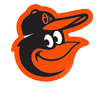We’re nearing the end of awards week for the Baseball Writers’ Association of America’s four highest honors that are handed out after every baseball season.
The third was announced last night as Paul Skenes was unanimously named the Cy Young Award winner in the National League. And it just so happens yours truly was among the 30 BBWAA members who submitted ballots to determine the league’s best pitcher for 2025.
My ballot was similar to those of the other 29 voters in that we all had the same top two selections. Skenes and the Phillies’ Cristopher Sánchez were the only pitchers named on every ballot, and this was the first time the winner received all the first-place votes and the runner-up all the second-place votes since the BBWAA went to a five-player ballot format for the Cy Young Award in 2010.
I was one of just four voters whose ballots had the Brewers’ Freddy Peralta in third place (he finished fourth), and I was one of 11 who had the Dodgers’ Yoshinobu Yamamoto fourth (he finished third). I was also one of seven who had the Padres’ Nick Pivetta fifth (he finished sixth).
But the award rightfully went to Skenes, who became the 13th pitcher to be unanimously elected the NL winner.
In just his second full major league season, Skenes put together one of the best starting pitching performances we’ve seen … all while playing on a last-place team.
Although he finished 10-10 (which tied Jacob deGrom’s 10-9 mark for the Mets in 2018 as the fewest number of victories for a Cy Young Award-winning starting pitcher in a full season and had more to do with the state of the Pirates overall than with his own personal performance), Skenes led the majors with a 1.97 ERA in 32 starts. He also led the NL with a 0.948 WHIP while only giving up 11 home runs for a big league-best 0.5 home runs per nine innings.
The underlying metrics supported Skenes’ case as well. He also led the majors in Baseball Reference’s ERA+ metric with 217, which is adjusted per the player’s ballpark, with 100 being league average. And he led the bigs with a 2.36 Fielding Independent Pitching metric, which takes his team’s defense behind him out of the ERA equation.
His 6.6 WAR per FanGraphs’ model led all NL pitchers, while his 7.7 WAR per Baseball Reference was second only to Sánchez’s major league-leading 8.0.
Skenes didn’t give up an earned run in 14 of his 32 starts. He gave up three or fewer in 28 of them. The most he gave up in a single start was five against the Cardinals in his third outing of the season.
With 216 strikeouts and only 42 walks, he posted 10.4 strikeouts per nine innings and 5.14 strikeouts per walk.
The one knock on Skenes might be his innings total. He only pitched 187 ⅔ innings this season, which was fourth-most in the NL, and only completed seven or more six times. But even so, the former No. 1 overall pick showed he’s the model of consistency and domination on the mound.
Now he’s won back-to-back BBWAA awards in his first two big league years after being named the NL Rookie of the Year last year in a landslide victory. He became just the second pitcher to win the award the year after he was named NL Rookie of the Year, duplicating Dwight Gooden’s feat for the Mets in 1984 and ‘85, and just the seventh former NL Rookie of the Year recipient to go on to win the Cy Young.
Fernando Valenzuela is the only pitcher to win both awards in the same season, in 1981 with the Dodgers.
Sánchez’s season was very impressive as well. He pitched the third-most innings in the majors with 202 and went 13-5 with a 2.50 ERA and 1.064 WHIP over his 32 starts. He struck out 212, walked 44 and only gave up 12 home runs, which led to 9.4 K/9 and 4.82 K/BB.
But his WAR was lower per FanGraphs’ model (6.4) and his 3.00 xERA and 2.55 FIP were all higher than Skenes’ numbers.
With all of those numbers being slightly worse than Skenes’, the only case for Sánchez was his record and the fact that he played on a better team, neither of which I took into serious consideration when casting my vote.
Yamamoto’s season was also incredible and he was very deserving of third place. Had voting occurred after the postseason, the eventual World Series MVP probably would have also won the Cy Young.
Alas, voters can only take the regular season into consideration. And his season was still stellar: 12-8 with a 2.49 ERA, 0.990 WHIP, 201 strikeouts, 59 walks, 10.4 K/9 and 3.41 K/BB in 30 starts. With only 113 hits surrendered, Yamamoto led the majors with 5.9 hits per nine innings.
But for me, Peralta barely went ahead of Yamamoto because of what I saw from the Brewers right-hander in person.
Don’t get me wrong, his regular season was strong, too: 17-6 with a 2.70 ERA, 1.075 WHIP, 204 strikeouts, 66 walks, 10.4 K/9 and 3.09 K/BB while leading the league in wins over 33 starts. But when I saw him dominate the Nationals in Milwaukee on July 13 to the tune of one run, three hits, one walk and seven strikeouts over 6 ⅔ innings, he looked like one of the top-three pitchers in the league to me.
That left Pivetta to round out my ballot. The former Nationals farmhand finished 13-5 with a 2.87 ERA, 0.985 WHIP, 190 strikeouts, 50 walks, 9.4 K/9 and 3.80 K/BB in 31 starts with the Padres.




-1745819772711.png)

